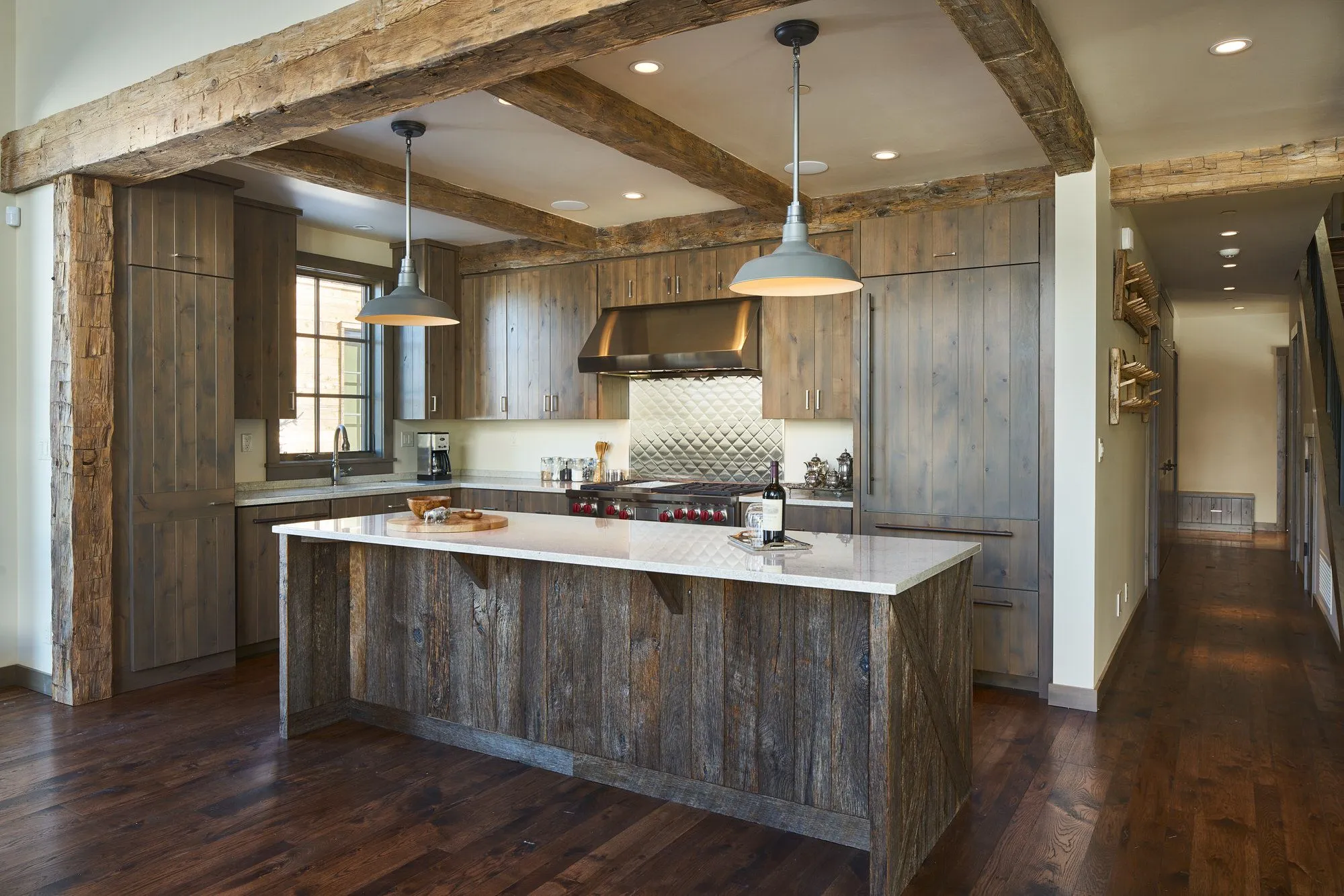What is Rustic Kitchen Decor?
Rustic kitchen decor celebrates the beauty of natural materials and a lived-in aesthetic. It’s about creating a warm, inviting space that feels connected to nature and history. The style often incorporates elements like exposed wood beams, stone accents, and vintage or antique furniture, evoking a sense of simplicity, comfort, and enduring charm. Think of a kitchen that tells a story, where every piece has character and adds to the overall feeling of coziness and authenticity. The goal is to create a space that feels both functional and aesthetically pleasing, a place where family and friends can gather and feel at home.
The Origins of Rustic Decor
The roots of rustic decor trace back to the countryside and the desire to create a space that connects us to nature. It draws inspiration from the simple, functional design of rural homes and farmhouses. This style emerged as a reaction against the more formal and ornate styles of the past, embracing a more relaxed, casual, and practical approach to interior design. The historical context of rustic design often references the use of locally sourced materials and the resourceful use of what was available. It’s a style that values authenticity and the imperfections that come with handcrafted items and natural materials, creating a timeless appeal that transcends fleeting trends.
Key Elements of Rustic Kitchen Style
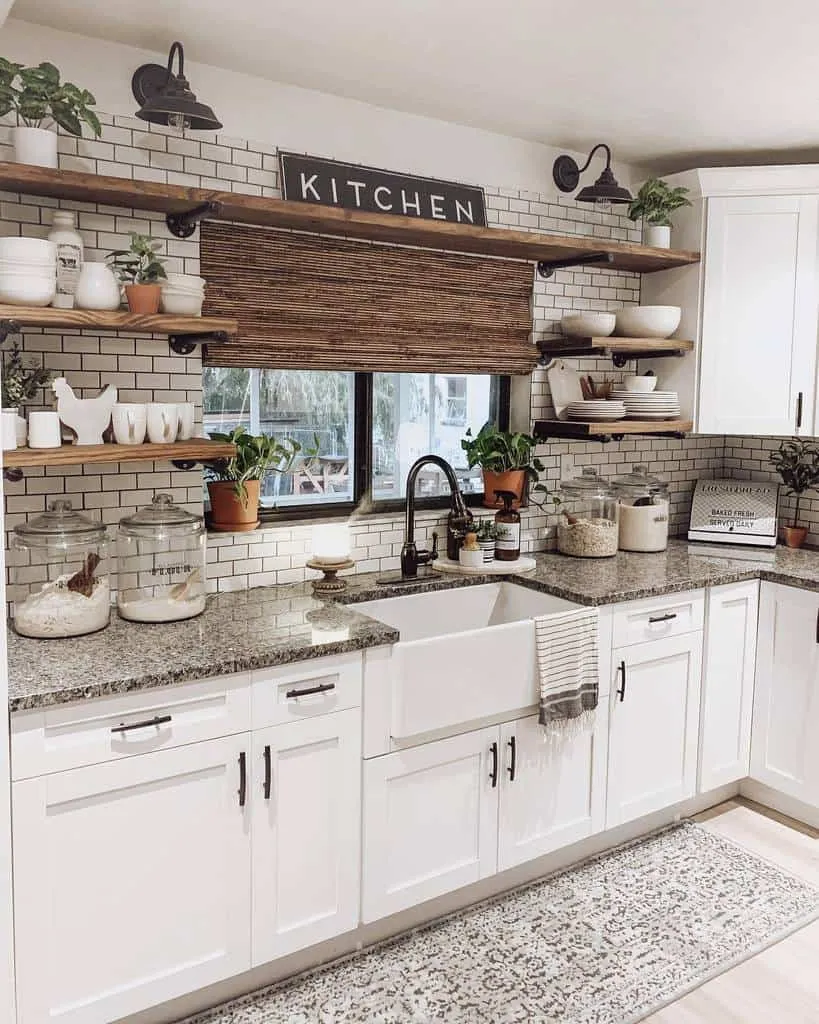
Several key elements define the rustic kitchen style, contributing to its unique character and appeal. These elements work together to create a cohesive and inviting atmosphere. One of the primary characteristics is the use of natural materials, such as wood, stone, and metal, which bring a sense of warmth and organic texture to the space. The color palette often leans towards earthy tones, including warm neutrals, muted greens, and deep browns, which further enhance the connection to nature. Vintage or antique furniture and accessories, such as farmhouse tables, open shelving, and repurposed items, add a sense of history and character to the kitchen.
Natural Materials in Rustic Kitchens
The use of natural materials is central to rustic kitchen decor, providing texture, warmth, and a connection to the outdoors. These materials give the space a sense of authenticity and a grounded, timeless aesthetic. They help to create a kitchen that feels both welcoming and enduring, and is a space that invites you to slow down and enjoy the simple pleasures of life.
Wood
Wood is a cornerstone of rustic design, offering a rich source of warmth and character. It can be incorporated in various ways, from exposed beams and wooden cabinetry to butcher block countertops and rustic furniture. The type of wood used plays a role in the overall aesthetic; reclaimed wood, with its knots and imperfections, adds a sense of history, while lighter woods like pine or maple can create a brighter, more airy feel. The finish on the wood is also essential, with natural stains and finishes often preferred to highlight the wood’s grain and natural beauty.
Stone and Brick
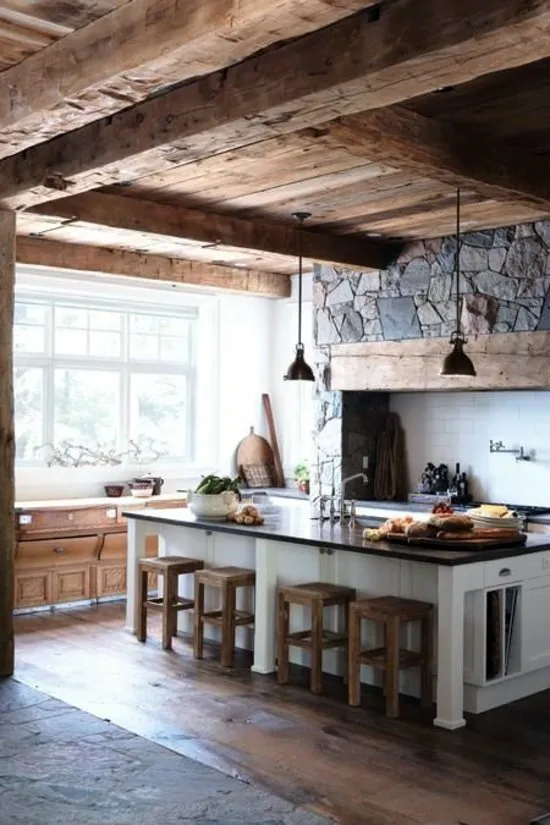
Stone and brick are other key natural materials that contribute to the rustic charm. Stone can be used for countertops, backsplashes, or even flooring, bringing a touch of nature’s rugged beauty into the kitchen. Brick, whether used as a backsplash, accent wall, or flooring, adds texture and historical depth. These materials are celebrated for their durability and their ability to create a sense of permanence and grounding in the kitchen. The textures and colors of stone and brick add visual interest and contribute to the overall feeling of warmth and character.
Metal
Metal accents, such as wrought iron hardware, copper cookware, or stainless steel appliances, add a touch of industrial charm to the rustic kitchen. These elements provide a contrast to the natural materials and enhance the overall aesthetic. Metals can be used in a variety of ways, from decorative elements like cabinet pulls and pot racks to functional items like sinks and faucets. The use of metal adds a touch of sophistication and a sense of durability to the kitchen, complementing the other rustic elements.
Color Palettes for Rustic Kitchens
The color palette is crucial in creating the warm and inviting atmosphere characteristic of rustic kitchens. Earthy tones and warm neutrals form the foundation, complemented by accent colors inspired by nature.
Earthy Tones
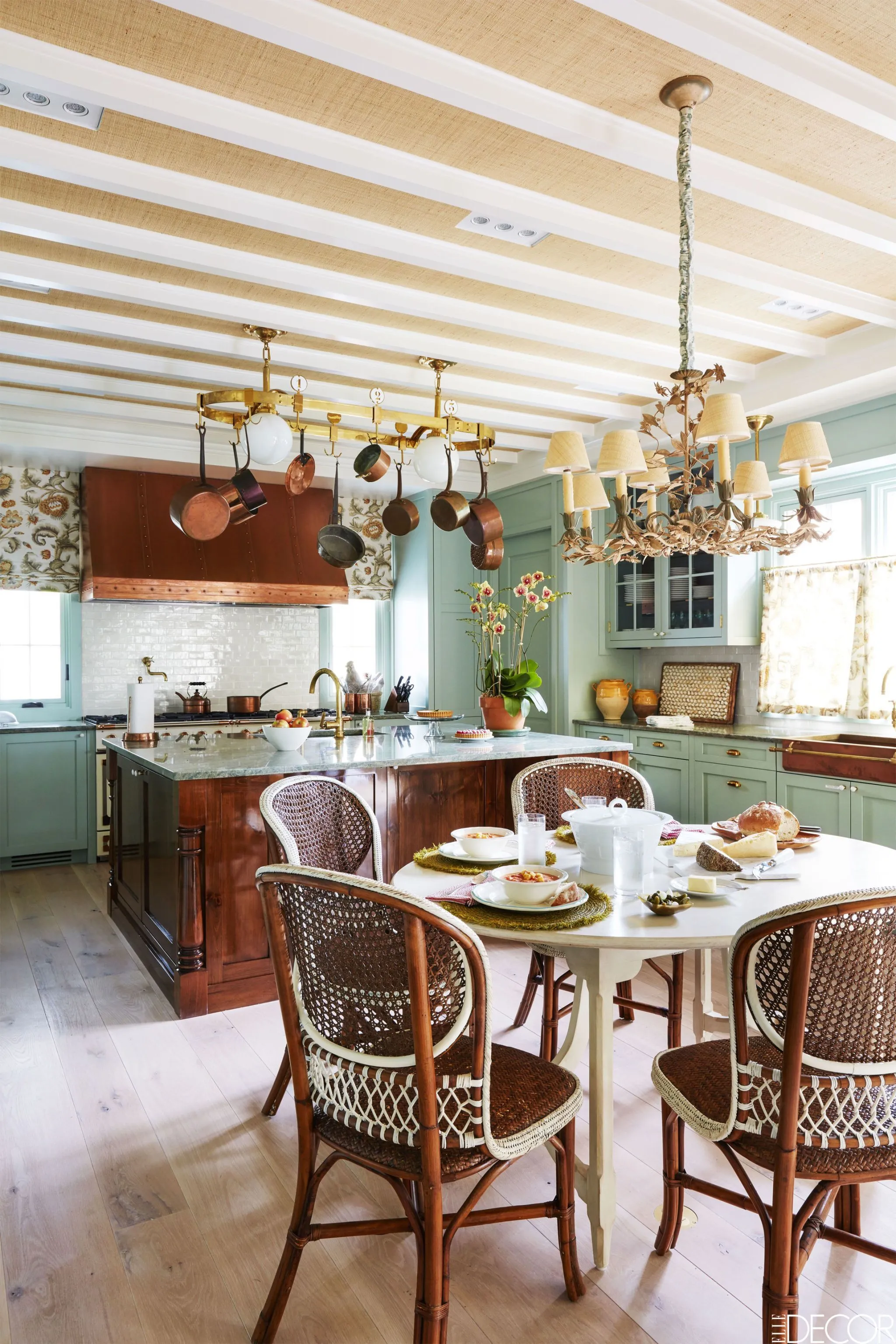
Earthy tones such as deep browns, warm beiges, and muted greens are essential in a rustic kitchen. These colors reflect the natural world, providing a sense of grounding and harmony. They create a warm and inviting atmosphere, acting as a backdrop for other rustic elements. Earthy tones can be used on walls, cabinetry, and even in the form of decorative accents, tying the entire space together and creating a cohesive design.
Warm Neutrals
Warm neutrals, like cream, ivory, and light tan, are also key to a rustic color scheme. They provide a sense of lightness and airiness, balancing the earthier tones and preventing the space from feeling too dark or heavy. These neutral colors work as a versatile foundation, allowing other rustic elements to stand out. They also contribute to the feeling of spaciousness and can be used on walls, ceilings, and as accents, adding a touch of elegance and sophistication to the overall design.
Integrating Rustic Decor into Your Kitchen
Incorporating rustic decor into your kitchen involves a thoughtful blend of elements, creating a cohesive and inviting space that reflects your personal style. The key is to balance functionality with aesthetics, ensuring the kitchen remains a practical space while embracing the charm and character of rustic design. This approach allows you to create a kitchen that is both beautiful and functional, a place where you can enjoy cooking, gathering, and creating lasting memories.
Choosing Furniture
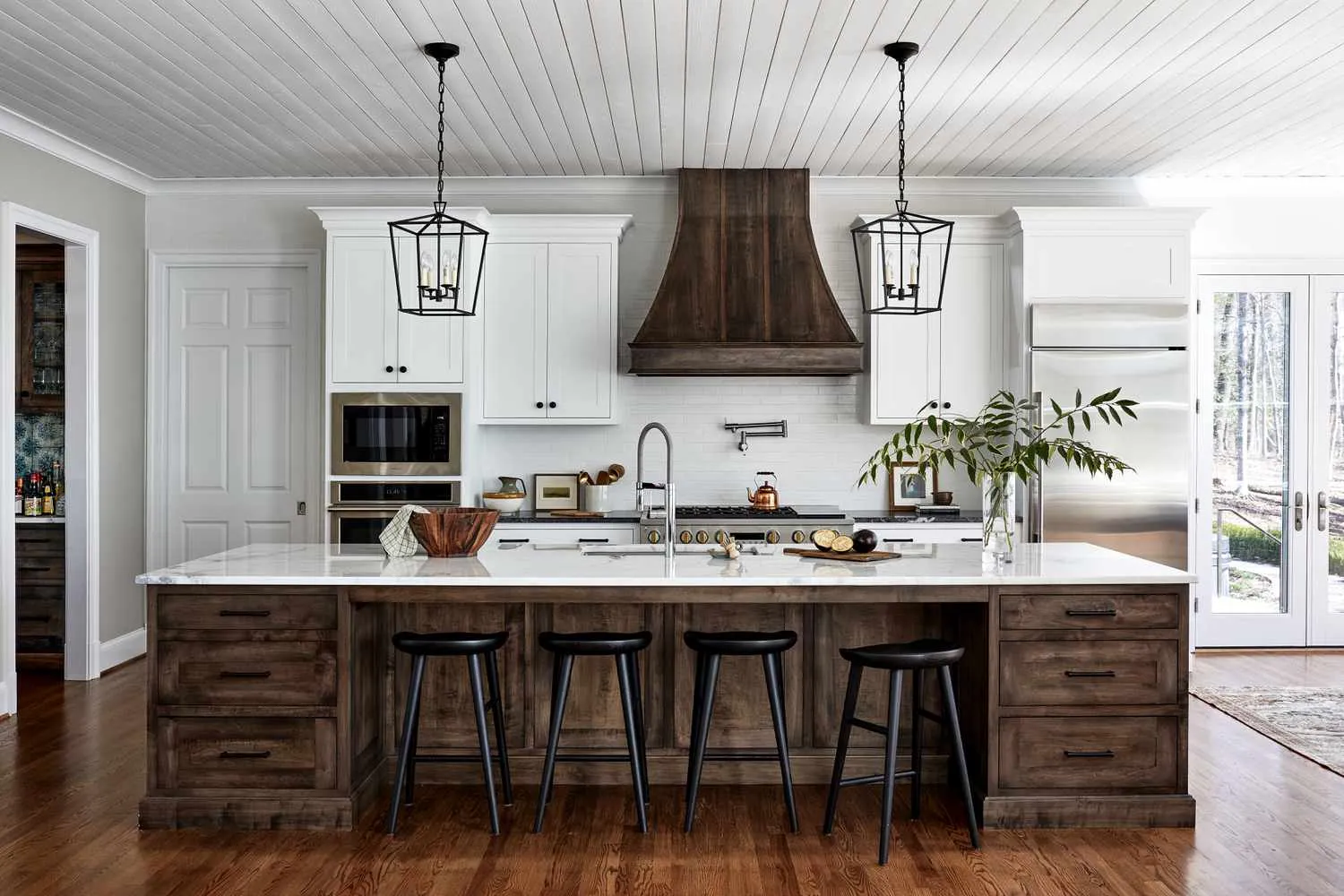
Choosing the right furniture is crucial. Look for pieces made from natural materials, such as a farmhouse table crafted from reclaimed wood, or wooden chairs with a distressed finish. Open shelving units made from rustic wood are perfect for displaying dishware and adding to the kitchen’s charm. Antique or vintage furniture items bring character and history to the space. Consider the scale and proportion of the furniture to fit well within the available space and ensure ease of movement.
Selecting Kitchenware
The selection of kitchenware can greatly enhance the rustic aesthetic. Opt for items that embody the rustic spirit. Consider using stoneware dishes, cast iron cookware, and copper pots. Mason jars can serve as drinking glasses or storage containers, adding a touch of country charm. Displaying these items on open shelving or a pot rack not only keeps them accessible but also adds to the overall visual appeal of the kitchen. Choosing vintage-inspired or handcrafted kitchenware adds a sense of authenticity and personal touch.
Adding Decorative Accents
Decorative accents add the finishing touches that define the rustic style. Introduce elements such as woven baskets, antique signs, and vintage artwork. Consider displaying fresh flowers or herbs in rustic vases or pitchers to bring a touch of nature indoors. Use textiles with natural textures and patterns, such as linen curtains, burlap table runners, and plaid dish towels. The goal is to create a curated collection of items that tell a story, adding personality and warmth to your kitchen.
Lighting Ideas for a Rustic Kitchen
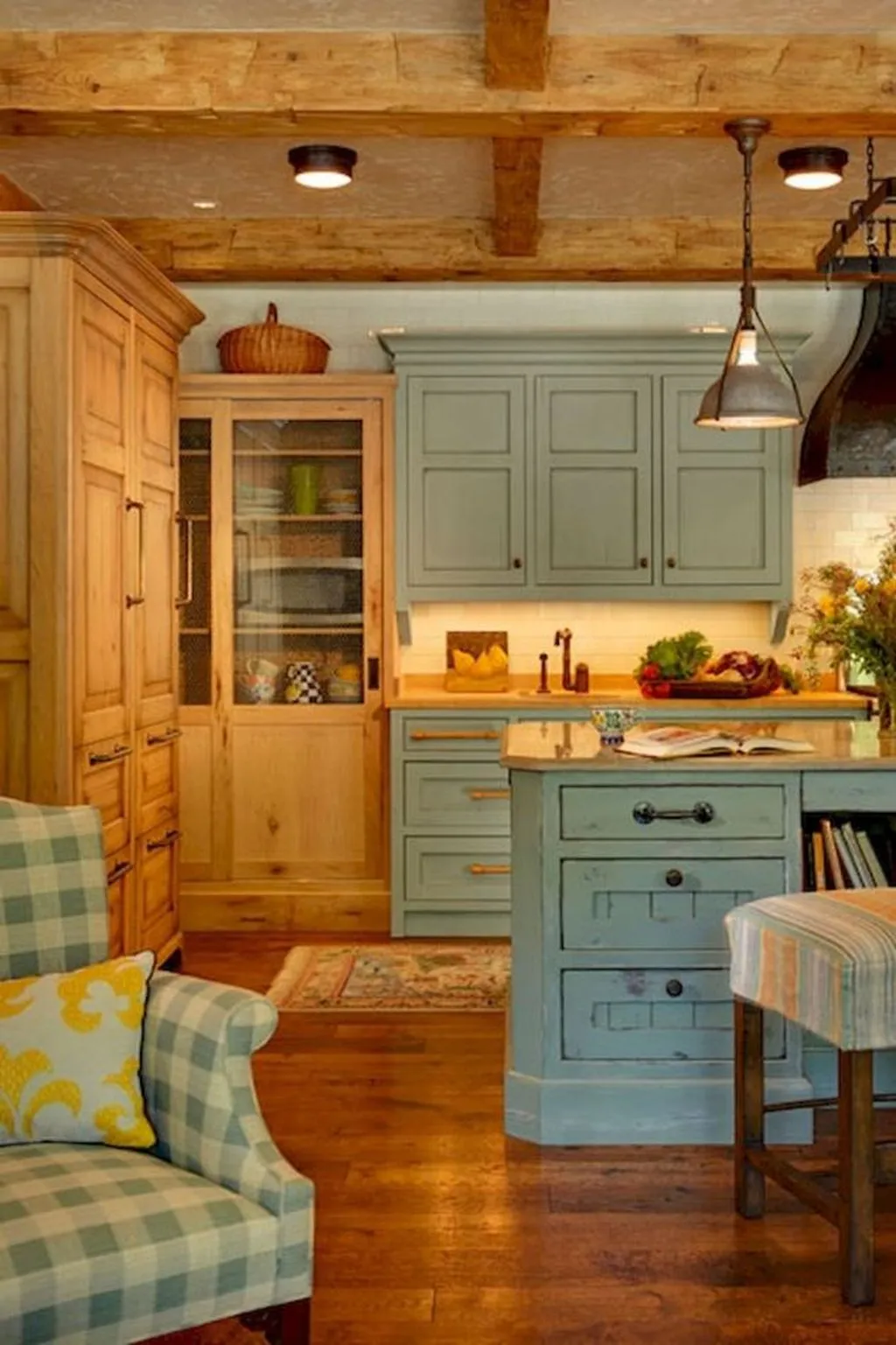
Lighting plays a crucial role in creating the ambiance of a rustic kitchen. The right lighting choices can enhance the natural materials and create a warm and inviting atmosphere.
Pendant Lights
Pendant lights are a popular choice for rustic kitchens. Consider using pendant lights made from metal, wood, or seeded glass. These lights can be hung above a kitchen island or dining table, providing both task and ambient lighting. The style of the pendant lights can range from industrial-inspired metal fixtures to more delicate, farmhouse-style designs, depending on the overall aesthetic you’re aiming for.
Chandeliers
Chandeliers can add a touch of elegance to a rustic kitchen. Choose chandeliers made from wrought iron or with a wooden frame, adding a touch of sophistication. These can be installed over a dining area or in the center of the kitchen to provide ambient light. Select a chandelier that complements the other lighting fixtures and fits well within the overall design of the kitchen, enhancing its rustic charm.
Wall Sconces
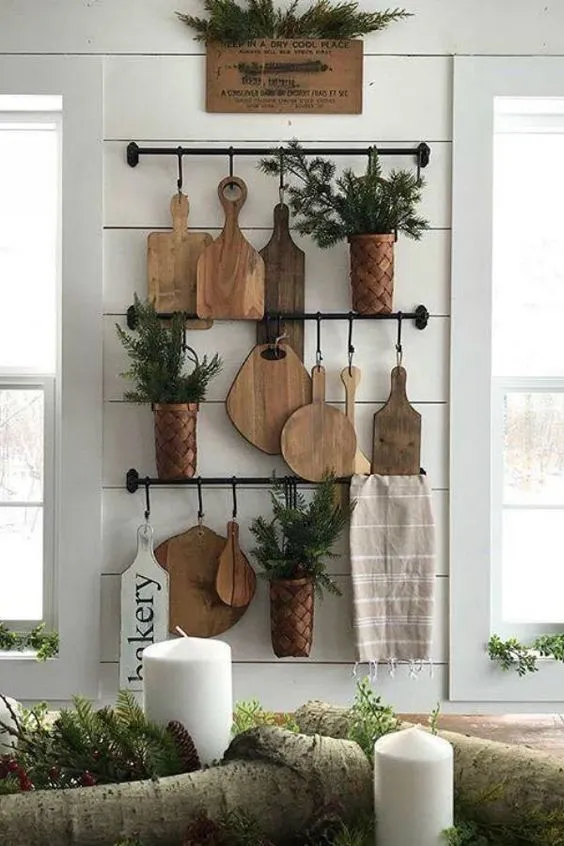
Wall sconces are ideal for adding accent lighting and creating a warm atmosphere. Consider using sconces with rustic finishes or made from materials like metal or wood. Place them near the sink, stove, or in other areas where you need focused lighting. They can contribute to the overall cozy and inviting feel of your rustic kitchen, while also providing functional lighting for various kitchen tasks.
Flooring Options for Rustic Kitchens
The flooring you choose can greatly impact the overall style of your rustic kitchen. Flooring choices should be durable, aesthetically pleasing, and complement other rustic elements.
Wood Flooring
Wood flooring is a classic choice for rustic kitchens, adding warmth and character. Consider using reclaimed wood planks for a more authentic feel. Wood flooring can be finished with natural oils or stains to protect it while highlighting the wood’s natural grain. Ensure that the wood flooring is sealed properly to prevent water damage, as kitchens are prone to spills and moisture. The variations in color and texture of the wood contribute to the unique rustic charm.
Stone or Tile Flooring
Stone or tile flooring offers a durable and practical alternative to wood. Stone tiles such as slate or travertine provide a natural, rugged look. Ceramic or porcelain tiles that mimic the appearance of stone or wood are also good options, as they offer durability and easy maintenance. Choose tiles in earthy tones to match the overall rustic aesthetic, complementing the other natural elements in the kitchen. These flooring choices add to the rustic aesthetic while providing practicality.
Maintenance and Care of Rustic Kitchen Elements
Maintaining and caring for the elements in your rustic kitchen will help preserve its beauty and ensure its longevity. Proper care will keep the kitchen looking its best and retain the authentic charm of the rustic design.
Maintaining Wood Furniture
Regularly dust your wooden furniture to prevent the buildup of dirt and grime. Clean the wood with a mild soap solution and a soft cloth, avoiding harsh chemicals that can damage the finish. Protect wooden surfaces from direct sunlight and excessive moisture. Consider using furniture polish or oil to keep the wood looking its best. Address any scratches or dents promptly, using appropriate touch-up products or consulting a professional if needed.
Caring for Stone and Brick Surfaces
Clean stone and brick surfaces regularly with a pH-neutral cleaner to prevent staining. Seal stone surfaces to protect them from water and oil damage. Sweep or vacuum brick floors regularly to remove dirt and debris, and consider using a stone-specific cleaner for deeper cleaning. Inspect these surfaces for cracks or damage, and address them promptly to prevent further deterioration. Proper care will help to preserve the natural beauty and durability of these materials.
